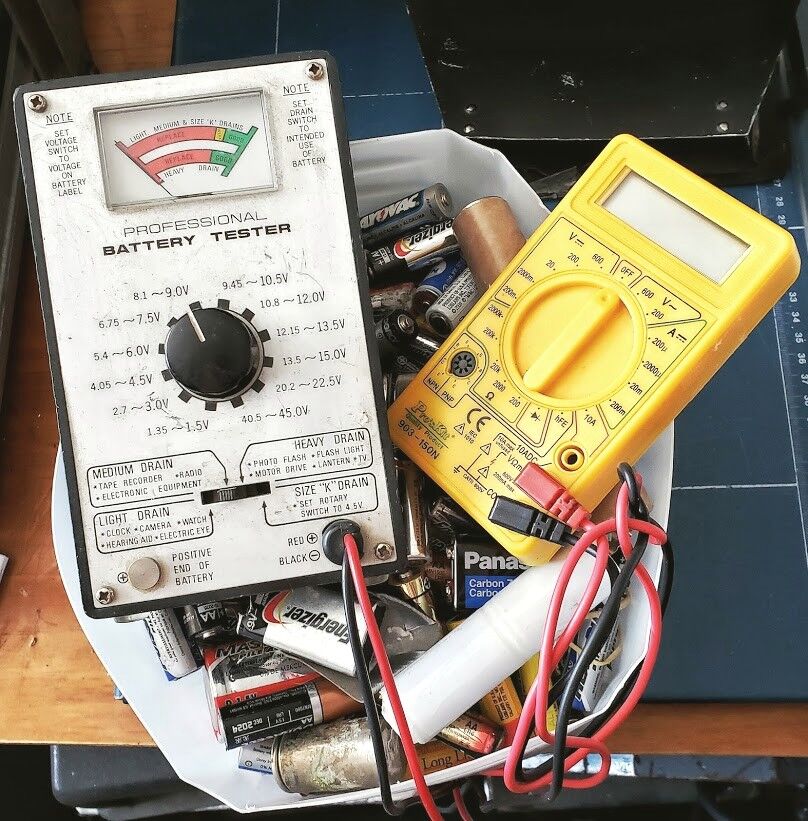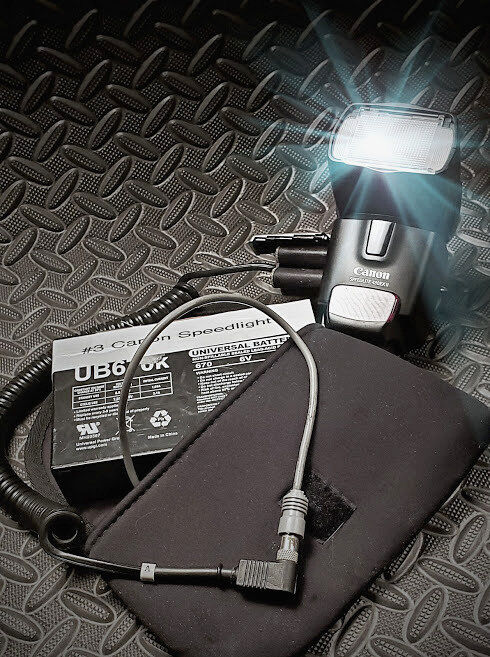Battery pack rebuild
Jul 2, 2023 15:35:37 #
Mozengrazen
Loc: Ilion, NY
https://www.instructables.com/Bring-Dead-Ni-Cad-Batteries-Back-To-Life/ This person restores the dead cells by discharging a capacitor through them to destroy the crystals that are shorting them out. I have restored many drill batteries by charging a capacitor with a 12 volt power supply and discharging it through the dead cells one at a time. A volt meter can be used to identify the dead cells. Most packs will have only one or two dead cells.
Jul 2, 2023 17:45:26 #
larryepage
Loc: North Texas area
Mozengrazen wrote:
https://www.instructables.com/Bring-Dead-Ni-Cad-Batteries-Back-To-Life/ This person restores the dead cells by discharging a capacitor through them to destroy the crystals that are shorting them out. I have restored many drill batteries by charging a capacitor with a 12 volt power supply and discharging it through the dead cells one at a time. A volt meter can be used to identify the dead cells. Most packs will have only one or two dead cells.
This can work. The reaction inside the cells is a violent, high-energy event. Sometimes it becomes an external violent, high-energy event. Take all appropriate precautions, including never holding the cells in your hand.
Jul 2, 2023 17:54:18 #
I have been dabbling in electricity and electronics since I was 8 years. I am a licensed Amateur Radio operator, I have built and repaired a lot of stuff. The main thing I have learned, overthe many years is the secret of success and where the genius lies in this kind of repair work- the rule is knowing when to stop and when something is way above my pay grade. Sometimes, the time involved in research, and messing around with some things that I am not totally familiar with turns out to be more expensive than having the repair done by an experienced technician.
Having spent some time as part of an electronic flash repair and modification business, I have seen folks sustain serious injuries and damage equipment beyond repair by poking around in a flash unit's power supply with a screwdriver.
The problem is, just about everyht in my studio and office is "electrified"- the darn pencil sharpener is motorized! I go through lots of batteries. Between the cameras, the portable flash gear, the meters, triggers, and just about everything else, I have enough batteries in play, at any given time, to start my own power station. Revevinh dead batteries wiht a capacitor is not on the agenda ! So I maintain all of them properly and give them a righteous burial (recycling) we they are dead. I would not risk taking a zombie and resurrected battery out on a job or even inserting it in a camer.
! So I maintain all of them properly and give them a righteous burial (recycling) we they are dead. I would not risk taking a zombie and resurrected battery out on a job or even inserting it in a camer.
My first boss and mentor was a very frugal man. Back in the day, we use 1,000- watt (photoflood) incandescent 3200K lamps in the portrait studio lights. The lams wor las for about 4-hours of "on" time.
Every now and then, a lamp would die prematurely because the filament had dislodged from one of the electrodes inside the lamp. Harry wod gently shake the lamp, side to side, to bottom until the filling ended up back on the thin electrode- The lamp would burn for 15 minutes and then come to its final demise! Not time/cost effective! Back in those days, no one argued withte BOSS! Well, except me- I was a smarta**
kid. I did, however, convince him to tal the plunge into electronic flash! My argument was 'no filaments"!
Having spent some time as part of an electronic flash repair and modification business, I have seen folks sustain serious injuries and damage equipment beyond repair by poking around in a flash unit's power supply with a screwdriver.
The problem is, just about everyht in my studio and office is "electrified"- the darn pencil sharpener is motorized! I go through lots of batteries. Between the cameras, the portable flash gear, the meters, triggers, and just about everything else, I have enough batteries in play, at any given time, to start my own power station. Revevinh dead batteries wiht a capacitor is not on the agenda
 ! So I maintain all of them properly and give them a righteous burial (recycling) we they are dead. I would not risk taking a zombie and resurrected battery out on a job or even inserting it in a camer.
! So I maintain all of them properly and give them a righteous burial (recycling) we they are dead. I would not risk taking a zombie and resurrected battery out on a job or even inserting it in a camer.My first boss and mentor was a very frugal man. Back in the day, we use 1,000- watt (photoflood) incandescent 3200K lamps in the portrait studio lights. The lams wor las for about 4-hours of "on" time.
Every now and then, a lamp would die prematurely because the filament had dislodged from one of the electrodes inside the lamp. Harry wod gently shake the lamp, side to side, to bottom until the filling ended up back on the thin electrode- The lamp would burn for 15 minutes and then come to its final demise! Not time/cost effective! Back in those days, no one argued withte BOSS! Well, except me- I was a smarta**
kid. I did, however, convince him to tal the plunge into electronic flash! My argument was 'no filaments"!


Jul 2, 2023 18:02:06 #
Mozengrazen wrote:
https://www.instructables.com/Bring-Dead-Ni-Cad-Batteries-Back-To-Life/ This person restores the dead cells by discharging a capacitor through them to destroy the crystals that are shorting them out. I have restored many drill batteries by charging a capacitor with a 12 volt power supply and discharging it through the dead cells one at a time. A volt meter can be used to identify the dead cells. Most packs will have only one or two dead cells.
First of all you're talking about 40 years old cells. Second the technique you're talking about involves disasembling the pack which is the most intensive work. The cost of new NiMH cells is nothing also these newer NiMH cells have significantly more capacity than the original NiCad cells. The cells I used in my Nikon MN-2 pack (for the F3) have more than 3 times the capacity of the original cells.
Jul 2, 2023 19:02:16 #
Dean37
Loc: Fresno, CA
Depends upon where you are and/or how soon you need the rebuilt battery or batteries, but I had my 2 Nikon MN-30 battery packs rebuilt by
Battery Pack Rebuilders, LLC (in March 2001)
5271 Mission Creek Road
Cashmere, WA
509-782-1269
They did a good job and the batteries are still working fine. The one thing I had to do, is refit the batteries to the camera as the "glue" and the reassembly caused the battery pack to be a few thousandths too large. I got some 400 grit sandpaper from the local hardware store and flat sanded a bit at a time. Of course you clean off the battery pack each time before reinserting into the camera. A short time later they fit tight enough that they don't fall out, but can easily be pulled out with the locking device.
I recommend calling them to see if they will take on your rebuild. They do battery rebuilds for the state of Washington, at least in 2001, and are probably contracted with other companies.
Battery Pack Rebuilders, LLC (in March 2001)
5271 Mission Creek Road
Cashmere, WA
509-782-1269
They did a good job and the batteries are still working fine. The one thing I had to do, is refit the batteries to the camera as the "glue" and the reassembly caused the battery pack to be a few thousandths too large. I got some 400 grit sandpaper from the local hardware store and flat sanded a bit at a time. Of course you clean off the battery pack each time before reinserting into the camera. A short time later they fit tight enough that they don't fall out, but can easily be pulled out with the locking device.
I recommend calling them to see if they will take on your rebuild. They do battery rebuilds for the state of Washington, at least in 2001, and are probably contracted with other companies.
Jul 2, 2023 19:30:54 #
Dean37
Loc: Fresno, CA
Mcwane wrote:
I have a degree in electronics and have done this sort of thing all my life. When my battery packs get to where they no longer hold a charge, I will buy a new one. . . .
Phil
Phil
New replacement battery packs are not always available. Some are of course and I too would buy new if possible.
I had my Nikon F5 MN-30 batteries rebuilt and while $50 to $60 each is not cheap, it certainly a lot cheaper than buying new at $295 if they were available. To this point they work as new and the rebuild was 22 years ago. The originals had to be rebuilt after 5 1/2 years. I admit I do not use the camera as much now because of 3 reasons, 1. 86 years old, 2. have dSLRs 3. depend on my cell phone too much.
Yes, I do have a battery tray for AAA batteries, AAA batteries are everywhere.
Jul 3, 2023 06:39:24 #
E.L.. Shapiro wrote:
I have been dabbling in electricity and electronic... (show quote)
I have that exact same yellow meter.
Jul 3, 2023 13:49:23 #
One of my Nikon battery packs failed. It was easier and cheaper to buy a non-Nikon replacement pack on EBay than have it rebuilt or buy the replacement from Nikon or B&H. Replacement had greater mah capacity than original Nikon battery pack. Three years later it still works and recharges perfectly. Try Ebay or Amazon.
Jul 3, 2023 16:22:16 #
lightyear wrote:
One of my Nikon battery packs failed. It was easier and cheaper to buy a non-Nikon replacement pack on EBay than have it rebuilt or buy the replacement from Nikon or B&H. Replacement had greater mah capacity than original Nikon battery pack. Three years later it still works and recharges perfectly. Try Ebay or Amazon.
Well see if you can find a working Canon NiCad FN battery pack for the Canon F1 motor drive on Ebay or Amazon?
Jul 4, 2023 13:13:42 #
Altprocess
Loc: Connecticut
Tried to email them but it is not secure, so my computer will not allow me to send it. I may call on Wednesday, but I'm already worried.
If you want to reply, then register here. Registration is free and your account is created instantly, so you can post right away.

